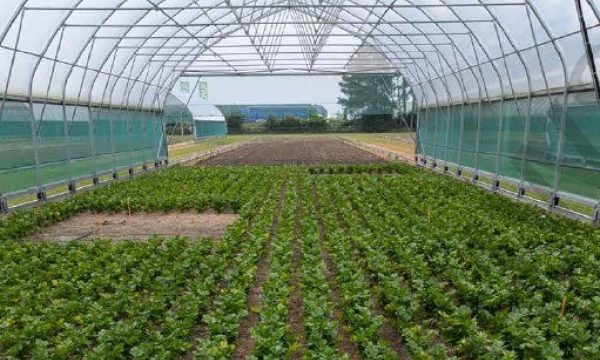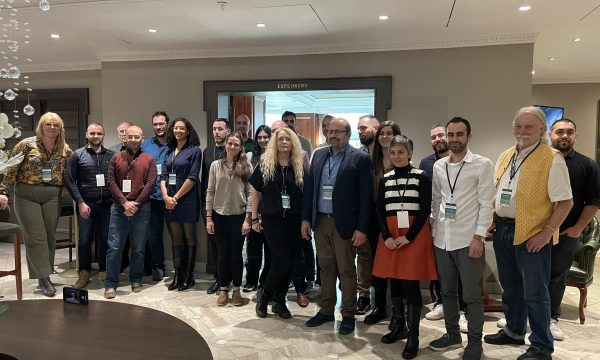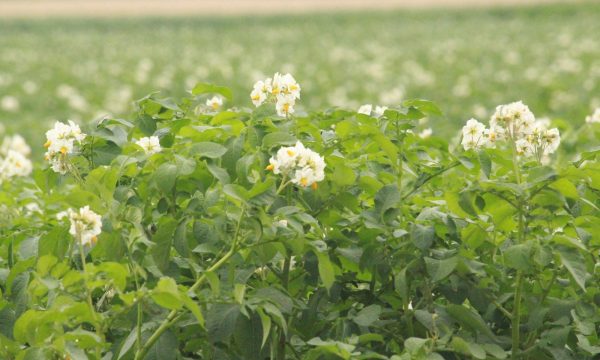Project news Nitrous oxide emissions from Flemish agricultural soils now being measured
How much nitrous oxide is released from agricultural soils in Flanders? And how can we reduce it as much as possible in a feasible way? Together with UGENT and Boerenbond, ILVO wants to formulate an answer to this question in the research project LILA.
This Flemish research project into the emission of the very powerful greenhouse gas nitrous oxide from agricultural soils is pioneering.
Weekly for 3 years! Such a field experiment measured so long and so frequently is unique in Flanders and guarantees us very representative research results. Only when we know exactly which emissions originate from agricultural soils can we also propose possible measures.
Measurement campaign to start from mid-April 2025
Gas samples are collected manually on a weekly basis which are then analyzed. The gases formed in the soil and escaping through the air are captured in boxes set up in the fields.
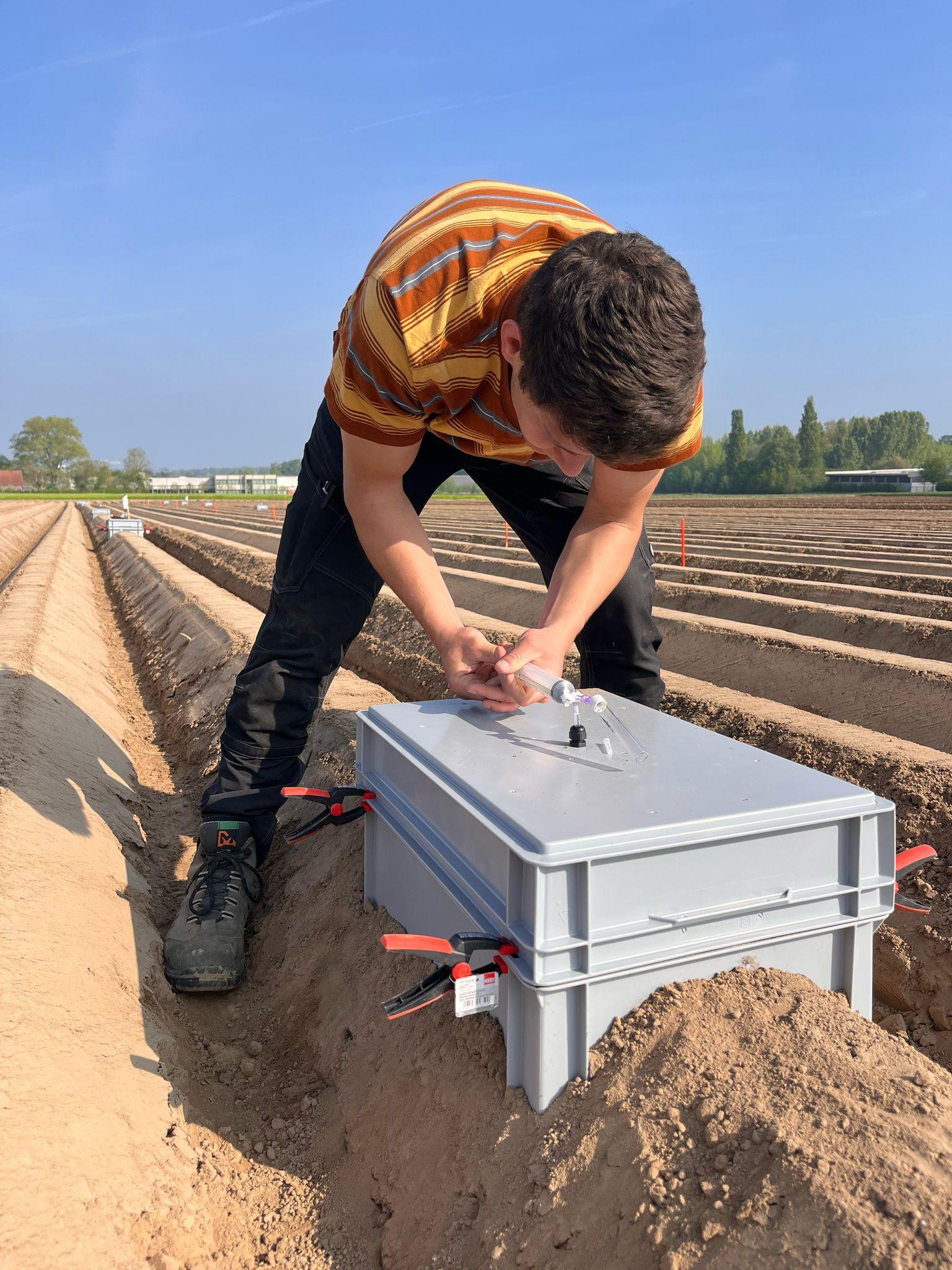
The researchers want to identify more precisely which conditions and processes surrounding use and incorporation of fertilizer and animal manure affect nitrous oxide but also the balance with ammonia emissions.
On the other hand, the researchers also want to examine how the build-up of carbon in the soil, and thus a reduction of carbon dioxide in the atmosphere, affects nitrous oxide emissions.
Carbon storage enjoys much interest because of its positive contribution to soil quality but also offers opportunities to earn something from it through the carbon farming revenue model. It is also stimulated in Flanders through an eco-scheme, but trade-offs between carbon storage and N2O emissions or CH4 emissions are little known. Therefore, within LILA the possible interaction between N2O soil emissions and carbon storage for organic fertilizer and crop residues will be budgeted.
Construction of experimental fields on the ILVO Research coulter in Merelbeke-Melle and in Kruisem (Viaverda)
In the fall of 2024, turnips were sown as green cover crops.

By March 2025, the turnips on the plots were incorporated, the soil injected with animal slurry, and the first gas measurements started. The field was then prepared for potato planting.
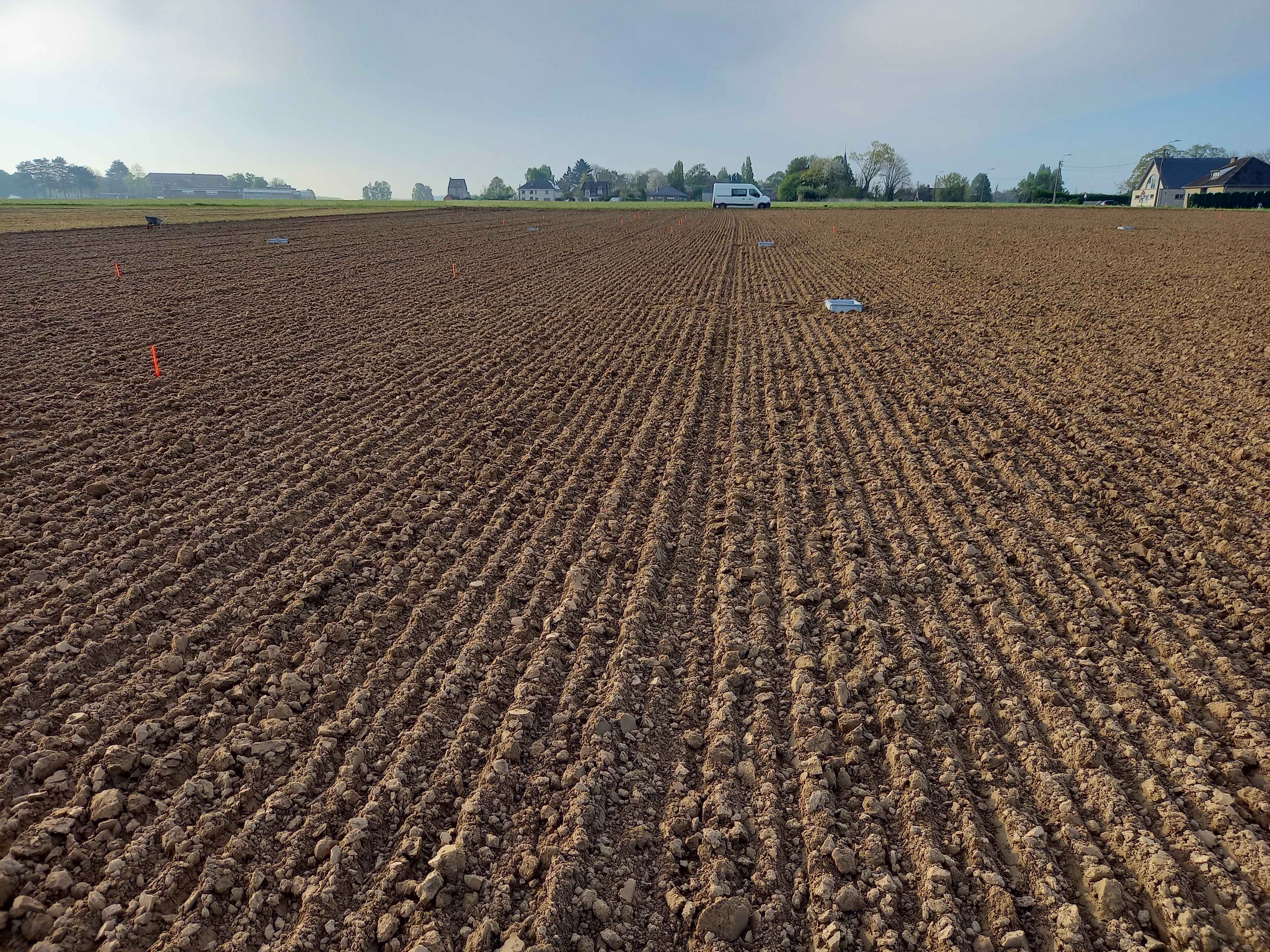
Potatoes (variety Sinora) were planted on April 23, 2025, after which nitrous oxide measurements continued on the 36 experimental plots.

On May 20, we see the first potato plants emerging.
Parallel to the measurement campaign on the trial field in Merelbeke Melle, nitrous oxide emissions are also measured in a potato plot on a trial field in Kruisem (in collaboration with Viaverda).
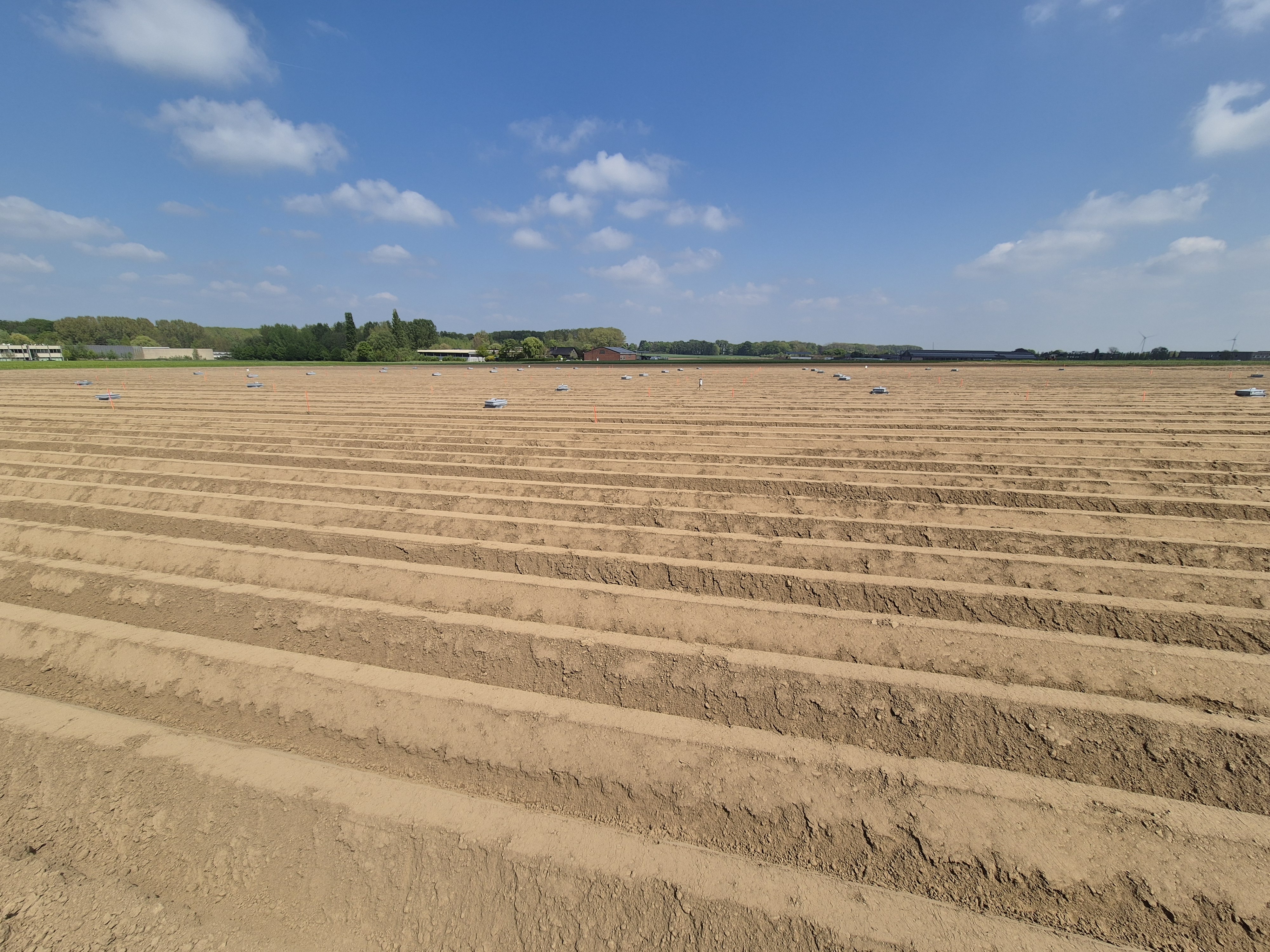
Learn more about the LILA research project: Beperking van bodem lachgasemissies: innovatieve mitigatiemaatregelen voor de Vlaamse landbouw en ontwikkeling van regionale emissiefactoren - ILVO Vlaanderen
